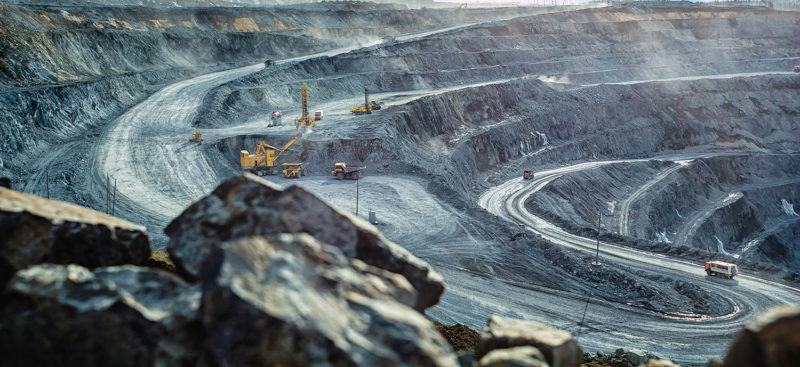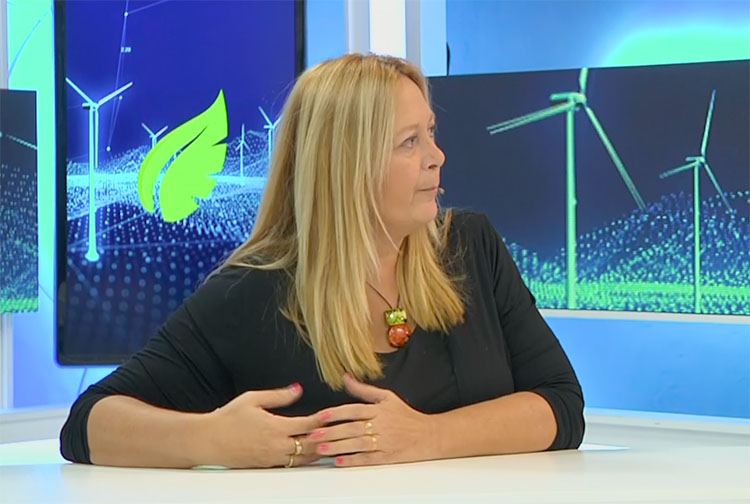

How to calculate and reduce your carbon footprint
After a temporary reduction caused by the pandemic, the carbon footprint is growing again and climate change is accelerating. Individuals, businesses, and regulators can help reduce greenhouse gas emissions. Let’s look at how it is evolving and what measures would help mitigate it.
The energy needs of human activity alone generated 36 billion tonnes of carbon dioxide (CO₂) in 2022, according to the International Energy Agency. A benchmark for the magnitude of this figure? Suffice to say that the entire world population put on a scale would not amount to 400 million tonnes. In other words, the CO₂ we emit in just one year is one hundred times the weight of the whole of humanity.
Carbon dioxide is the most abundant greenhouse gas and has contributed most to global warming in recent decades. Direct and indirect emissions of carbon dioxide, together with methane, nitrogen oxide, sulphur hexafluoride, hydrofluorocarbons, and perfluorocarbons, make up what is known as the “carbon footprint”. This is an environmental indicator coined in the 1990s to measure the contribution of human activity to global warming.
The reality is that we are far short of the targets set to halt climate change. Scientists warn that net CO₂ emissions should be reduced to zero by 2050 if we are to avoid catastrophic consequences. Rising global temperatures lead to extreme weather events and rising sea levels due to melting ice.
Climate emergency
The UN estimates that since 1990 carbon dioxide emissions have increased by almost 50 percent. In fact, the World Meteorological Organisation notes that current levels of CO₂ in the atmosphere are similar to those of three million years ago, when the Earth’s average temperature was 3°C higher and sea levels were much higher than they are today.
It is, therefore, logical that one of the Sustainable Development Goals set by the UN should focus on the need to curb climate change. The formula is to take measures that will lead us to a low-carbon economy in the coming years.
In fact, the vast majority of the world’s countries signed the Paris Agreement in 2015, an international treaty that aims to limit global warming. Yet, our carbon footprint has continued to grow. Greenhouse gas emissions were only reduced in 2020. And the reason was the economic slowdown caused by the pandemic.
The Climate Transparency Report estimates that emissions from the G20 countries, which are responsible for 75 percent of greenhouse gases, grew by four percent again in 2022. China, India, Indonesia, and Argentina are already at higher levels than in 2019.
By geographical area, China, the United States, the European Union, and India account for more than half of the gases emitted in the last decade. In terms of activities, those producing the most CO₂ are power and heat generation (40%), transport of goods and people (20%) and industrial activity (20%).
Calculate your personal carbon footprint
The amount of greenhouse gases that each individual generates in their daily lives as they move around, eat and consume resources is known as their personal carbon footprint. To avoid a global temperature rise of more than 2°C, The Nature Conservancy, an environmental NGO, estimates that we should halve it by 2050.
There are numerous tools available to calculate your personal carbon footprint. In particular, the UN calculator takes into account aspects such as the characteristics of our home, our energy consumption, the type of transport we use on a daily basis, the amount of flying we do, our eating habits, and how much we recycle.
Some measures to reduce our personal carbon footprint are to opt for responsible consumption, commute in a more sustainable way, moderate our energy consumption and reduce the amount of waste we generate.
The weight of business
Far greater than the personal carbon footprint is the footprint left by businesses in processes such as manufacturing or transporting goods. This is known as the corporate carbon footprint. Hence, the importance of focusing on this area to reduce global warming.
Businesses can reduce their environmental impact by improving their energy efficiency or increasing the percentage of renewable energy they consume. They can also use offsetting tools, such as investing in environmental projects, paying green taxes or buying CO₂ emission rights.
A growing trend
Thousands of companies already publish their carbon footprint, but not all of them calculate it in the same way. Most large multinationals ignore indirect emissions, those that are part of their value chain but do not depend directly on them.
A paradigmatic example is Amazon. Pressure from activists and investors led this online retail giant to make its carbon footprint public for the first time last year. However, it has just been revealed that in its report it only accounted for a small part of the emissions generated by its sales.
Unlike other retailers, Amazon only accounted for the total environmental impact of its own products, which account for only 1% of its sales. The company does not account for the emissions generated by the use of another brand’s product once its delivery drivers deliver it to the customer.
An incentive for sustainabilityThe high impact of business activity on the environment has led more and more people to call for companies to be required to publish their carbon footprint in their annual reports.
So much so that the Securities and Exchange Commission, the US stock market regulator, has just proposed that listed companies in the US have to disclose their greenhouse gas emissions. And, very importantly, that they do so according to the same criteria.
Forcing companies to publish their carbon footprint can, according to many experts, make a decisive contribution to shortening the path to an emission-free economy. More and more investors are taking environmental issues into account in their investment decisions.
11Onze is the community fintech of Catalonia. Open an account by downloading the super app El Canut for Android or iOS and join the revolution!






Fa 16 anys vaig ser conscient del gran repte que tenim els humans amb el canvi climàtic. Felicitats per aquest resum, força acurat. La mesura més directa, i necessària a aquestes alçades, és reduir fins a zero les emissions directes de cada persona i família. Xina té més emissions que Bèlgica, per descomptat, 1.400 milions envers 12. Les emissions es compten per càpita, fer-ho per països és seguir amb el neocolonialisme. Una empresa emet més que qualsevol individu, és clar, tot i que hi ha mil·lers més indivudus que empeses. Reciclar millor hi ajuda, tot i que serveix de ben poc si seguim cremant gas a la cuina i dièsel en el vehicle. Cal reduir emissions directes d’empreses i individus. Ara o mai, per què ja no hi serem a temps. Continueu en aquesta línia, ens motiva i can fer córrer la veu
Gràcies per l’explicació, Jaume, molt interessant. En seguirem parlant a La Plaça! 🙌🏻
👏
Gràcies, Daniela!!!
👌
Moltes gràcies, Joan!!!
Ok 👍
Moltes gràcies, Josep!!!
obligar les empreses a publicar la seva petjada de carboni pot contribuir decisivament a escurçar el camí cap a una economia lliure d’emissions contaminants. Cada cop més inversors valoren
Estaria més que bé
Tens raó, Alícia. Juntament amb les inversions ESG (Mediambientals, Socials i de Bon Govern) i les inversions d’impacte (que no tan sols compleixen els criteris ESG, sinó que, a més, provoquen un impacte mediambiental positiu), ara seria desitjable que aquesta iniciativa dels EUA s’estengués a tot arreu, perquè publicar aquestes dades obliga a fixar-se en la pròpia petjada de carboni.
Gràcies per compartir aquesta info.
Al vostre servei Manuel, gràcies per seguir-nos.
Moltes gràcies per aquesta informació. Es valuossísima👌
Si Jordi, gràcies a tu! Seguim!